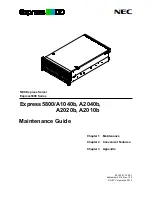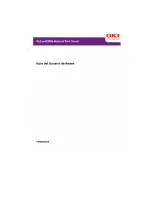
Installing
a
hot-swap
SCSI
hard
disk
drive
in
bay
4,
5,
6,
7,
8,
or
9
Some
server
models
support
hot-swap
hard
disk
drives.
The
SCSI
ID
for
each
hot-swap
hard
disk
drive
is
printed
on
the
hot-swap
lock
bar.
For
increased
security,
the
hot-swap
drives
and
filler
panels
are
locked
in
the
server
by
the
hot-swap
lock
bar.
The
hot-swap
lock
bar
cannot
be
released
to
allow
installation
and
removal
of
the
hot-swap
drives
and
filler
panels
unless
the
key
lock
on
the
server
side
cover
is
unlocked.
The
SCSI
ID
for
each
hot-swap
hard
disk
drive
is
printed
on
the
hot-swap
lock
bar.
Before
you
install
a
hot-swap
hard
disk
drive,
read
the
following
information:
v
Inspect
the
drive
tray
for
signs
of
damage.
v
Make
sure
that
the
drive
is
correctly
installed
in
the
tray.
v
To
maintain
proper
system
cooling,
do
not
operate
the
server
for
more
than
10
minutes
without
either
a
drive
or
a
filler
panel
installed
in
each
drive
bay.
v
All
hot-swap
drives
in
the
server
must
have
the
same
speed
rating;
if
you
mix
speed
ratings,
all
drives
will
operate
at
the
speed
of
the
slowest
drive.
v
You
do
not
have
to
turn
off
the
server
to
install
hot-swap
drives
in
the
hot-swap
drive
bays.
v
Set
the
drive
jumpers
either
to
disable
auto-start
or
to
delay
startup,
to
prevent
overtaxing
the
system
power
supply
by
all
drives
trying
to
spin
up
at
once.
v
Install
hot-swap
hard
disk
drives
in
this
sequence:
bay
9,
bay
8,
bay
7,
bay
6,
bay
5,
and
bay
4.
v
If
your
server
has
an
optional
RAID
adapter,
see
the
documentation
that
comes
with
the
adapter
for
instructions
for
installing
a
hard
disk
drive.
v
Each
hot-swap
drive
has
two
LEDs:
the
hard
disk
drive
activity
LED
and
the
hard
disk
drive
status
LED.
When
the
green
hard
disk
drive
activity
LED
is
flashing,
it
indicates
that
the
controller
is
accessing
the
hard
disk
drive.
When
the
amber
hard
disk
drive
status
LED
is
lit
continuously,
it
indicates
that
the
drive
is
faulty
and
must
be
replaced.
When
the
amber
hard
disk
drive
status
LED
is
flashing,
it
indicates
that
the
drive
is
being
rebuilt.
The
server
hot-swap
bays
are
connected
to
a
SCSI
backplane.
This
backplane
is
the
printed
circuit
board
behind
the
bay.
The
backplane
controls
the
SCSI
IDs
for
the
hot-swap
drives.
The
following
illustration
shows
how
to
install
a
hot-swap
hard
disk
drive.
20
xSeries
226
Type
8648:
Option
Installation
Guide
Summary of Contents for eServer xSeries 226 Type 8648
Page 1: ...xSeries 226 Type 8648 Option Installation Guide ERserver...
Page 2: ......
Page 3: ...xSeries 226 Type 8648 Option Installation Guide ERserver...
Page 56: ...44 xSeries 226 Type 8648 Option Installation Guide...
Page 62: ...50 xSeries 226 Type 8648 Option Installation Guide...
Page 70: ...58 xSeries 226 Type 8648 Option Installation Guide...
Page 74: ...62 xSeries 226 Type 8648 Option Installation Guide...
Page 75: ......
Page 76: ...Part Number 88P8978 Printed in USA 1P P N 88P8978...
















































